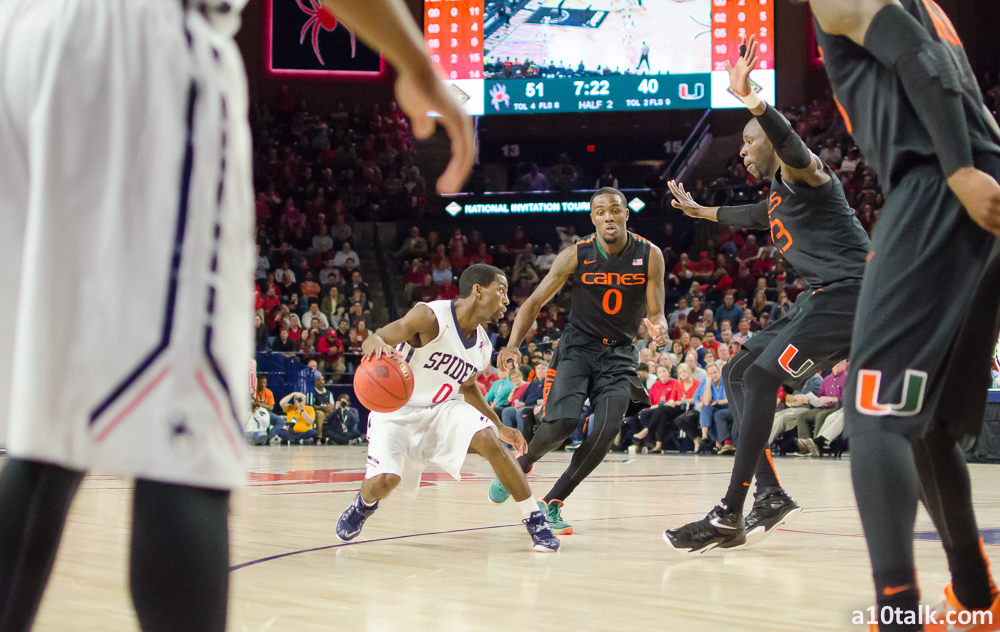Height is something that is undeniably important in college basketball. But how do the A10 teams stack up hight-wise?
According to the National Bureau of Health, the average height for an American male is 5 feet, 9 inches. Last season, only 2% of players in college basketball were that hight or shorter. On the opposite side of the spectrum, if you are an American male who is 7 feet or taller, you have a 1 in 7 chance of playing in the NBA in your lifetime. What does this tell us, other than being tall is helpful if you want to play basketball professionally? That height is really, really important in basketball.
These days it is impossible to make it through a college basketball broadcast without the announcers lamenting about a player’s frame, length, or height. “You can’t teach height” is a phrase that I have heard uttered many times on air. While you can’t coach or teach a player to be taller or have a bigger wingspan, you can recruit kids who do.
The Atlantic Ten, from a national perspective, is not a tall league. That falls into the narrative of the mid-major conference with all the small pesky teams who upset people in the tournament. While that couldn’t be further from the truth in reality, the Atlantic Ten just does not have the average height that other leagues do. Average height is simply the average of every player on the roster. George Washington is the leader in this category, with an average height of just under 6 feet, 5 inches. This is good for only 83rd nationally. Richmond, Saint Louis, and St. Joseph’s are the next three closest, but the Atlantic Ten does not have another team inside the top 100. St. Bonaventure is the shortest team in the conference, ranking 303rd in average height out of 351 teams nationally.
However, simply having tall players on your roster is not enough to encapsulate what a team’s identity is relative to height. The team could never play their big men, or they could have one or two skilled big guys who get a ton of minutes. That is why there is a statistic called “effective hight”. This takes into account injuries, playing time, and usage, and develops a number much closer to the height one would experience playing this team. Once again, George Washington ranks highest in the conference, coming in at 38th nationally in effective height. It is save to say that we can officially label George Washington as the tallest team in the conference. Duquesne and George Mason also both ranked in the top 100 nationally, with the rest of the conference falling around the middle of the pack. The Atlantic Ten also does not boast a single player that is 7 feet tall. The closest that any player comes to that mark is Duquesne’s Tyler Lewis, who stands at 6’11”, 245 lbs.
The real question I think is, does any of this matter? Looking at the conference as a whole, does being the tallest team or having the tallest player have any statistical benefits? The three areas that I think having tall players would help the most would be rebounding, blocking shots, and overall defense. Looking at the teams I mentioned above for having the best effective height (George Washington, Duquesne, and George Mason) none of them were in the top three in blocks or defense. The only exception to this was George Washington, who lead the conference in offensive rebounding.
This really shows that height is random, and doesn’t have much affect on the game at all. Having a good shot blocker is important, but it doesn’t really matter if that guy is 7 feet tall or “only” 6’10”. Next week I am going to take a look at a statistic that might be much more indicative of what some of the Atlantic 10 teams are made of and how it might help certain squads down the stretch: the average age and years of experience of each team.

